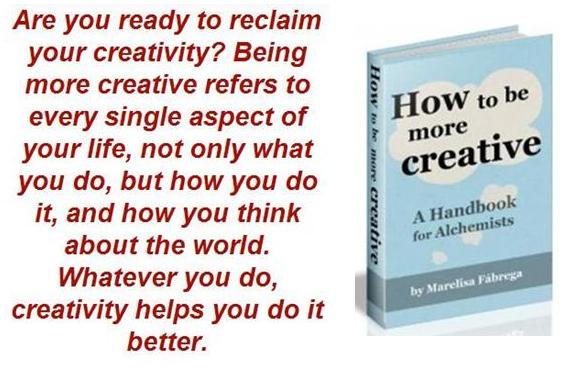 Conflict is a natural and inevitable part of life–your co-worker takes credit for your work; your spouse is habitually late; your neighbor’s dog keeps doing his business in your yard; and so on.
Conflict is a natural and inevitable part of life–your co-worker takes credit for your work; your spouse is habitually late; your neighbor’s dog keeps doing his business in your yard; and so on.
The good news is that conflict doesn’t have to lead to fighting and to broken relationships. There are ways of dealing with conflict constructively in order to resolve arguments and disputes amicably, instead of allowing the situation to get out of hand. Conflict resolution is an important skill for everyone to develop.
I worked for several years as a labor attorney at the Panama Canal, and one of my main duties was negotiating with the labor unions on behalf of the administration of the canal. In addition, I have a graduate degree in mediation. Below you’ll find some of the things I’ve learned about resolving conflicts constructively.
Sit Down to Discuss the Issue and Establish Ground Rules
 In many instances, the problem is not so much the nature of the dispute itself; instead, the problem is the way in which the dispute is handled. When you sit down with someone in an attempt to resolve a disagreement, you should start out by establishing ground rules.
In many instances, the problem is not so much the nature of the dispute itself; instead, the problem is the way in which the dispute is handled. When you sit down with someone in an attempt to resolve a disagreement, you should start out by establishing ground rules.
The purpose of establishing ground rules is to create a space of tolerance and respect in which you can both iron out your differences. Ground rules can include things such as the following:
- Each side will take turns speaking, and each one will get an equal amount of time to speak.
- When one person is talking, the other person can’t interrupt them. If one person hears something that they want to respond to and it’s not their turn to speak, they should write it down and wait until it’s their turn to say it.
- Just try to resolve the issue at hand. If there are other issues that need to be discussed, set a later time to talk about them. Resist the urge to bring up every grievance that you have with the other person in one sitting.
- Refrain from using phrases such as “You always”, or “You never”. People rarely “always” do something or “never” do something, and phrases like these just put the other person on the defensive.
- Try not to blame the other person, speak for the other person, or speculate about their motives. Accept that you are not a mind reader and you do not know the other person’s intent.
- Both sides should seek to maintain emotional control.
- Treat each other with respect–don’t blame, attack, or engage in put-downs.
In addition to establishing ground rules, keep the following three things in mind:
- Each side should strive to take responsibility for their contribution to the conflict. When you’re arguing with someone it’s tempting to think that the other person is completely at fault. However, it’s important that you examine how your actions have contributed to the problem.
- Constantly strive to look for areas of agreement and common ground.
- Both sides need to understand that resolving conflict is not about figuring out who’s right or assigning blame. Rather, it’s about moving forward and learning a new way to deal with each other in the future.
Focus on Interests, Not Positions
 During any conversation in which you’re trying to resolve a disagreement, the aim should be to identify each side’s interests. In other words, instead of focusing on positions-where each side takes a firm stance as to exactly what it is that they’ve decided they want–each side should express the needs, concerns, desires, fears, and aspirations that underlie their position.
During any conversation in which you’re trying to resolve a disagreement, the aim should be to identify each side’s interests. In other words, instead of focusing on positions-where each side takes a firm stance as to exactly what it is that they’ve decided they want–each side should express the needs, concerns, desires, fears, and aspirations that underlie their position.
A simple example that is often used to illustrate the difference between arguing over positions and communicating interests is the story of the orange. The story goes as follows:
- Two brothers are fighting over an orange.
- Each one argues why he deserves to keep the orange. The first brother yells that he’s the eldest and should be one to keep the orange. The other brother answers that he got to the orange first, and therefore he should be the one to keep it.
- The father walks in on the argument. He takes the orange and cuts it in half. He then proceeds to give half the orange to each of his sons.
- Both brothers are upset because neither got what he wanted. This is what usually happens when people argue over positions.
It turns out that the first brother wanted to make orange juice. That is, all he needed was the pulp of the orange. The other brother was preparing a recipe that required the skin of the orange. Instead of arguing back and forth over their positions, each brother should have explained why he needed the orange. That is, each one should have clearly explained his interests to the other.
If they had communicated their interests to one another, both would have gotten what they wanted:
- The first brother would have gotten all of the pulp so that he could squeeze a glass of orange juice for himself.
- The other brother would have gotten all of the orange’s skin and he would have been able to make his recipe.
By explaining their interests instead of arguing over their positions, both brothers would have left satisfied.
Develop the Skill of Active Listening
 In the words of Stephen Covey: “If I were to summarize in one sentence the single most important principle I have learned in the field of interpersonal relations, it would be this: seek first to understand, then to be understood. This principle is the key to effective interpersonal communication.”
In the words of Stephen Covey: “If I were to summarize in one sentence the single most important principle I have learned in the field of interpersonal relations, it would be this: seek first to understand, then to be understood. This principle is the key to effective interpersonal communication.”
In order to understand what another person is trying to tell you, you need to develop the skill of active listening. Active listening involves the following:
- When it’s the other person’s turn to speak make sure that you remain focused on what they’re saying. Don’t let your attention wander, and refrain from rehearsing in your head what you’re going to say next.
- Observe the other person’s body language and pay attention to their tone of voice.
- Use paraphrasing to make sure that you understand what the other person is saying. Paraphrasing basically means that when the other person is finished talking you repeat in your own words what you heard them say. Since you’re repeating what you think you heard the other person say, the speaker can correct anything that you didn’t understand.
- Encourage the other person to elaborate on what they’re saying and to get everything they’re feeling off their chest. If something is not clear to you, ask for clarifying information.
When you use active listening you establish rapport with the other person. In addition, by showing the other person that you value what they have to say, and that you’re making a sincere effort to understand their point of view, you create trust.
Practice Empathy
 Mahatma Gandhi–the leader of India’s movement for independence from Great Britain–, once said the following: “[W]hat may appear as the truth to one person will often appear as untruth to another person. But that need not worry the seeker. Where there is honest effort, it will be realized that what appeared to be different truths are like the countless and apparently different leaves of the same tree.” — Ghandi
Mahatma Gandhi–the leader of India’s movement for independence from Great Britain–, once said the following: “[W]hat may appear as the truth to one person will often appear as untruth to another person. But that need not worry the seeker. Where there is honest effort, it will be realized that what appeared to be different truths are like the countless and apparently different leaves of the same tree.” — Ghandi
An important aspect of constructive conflict resolution is to try to see the world from the perspective of the other person. Put yourself in their shoes. Be curious about the other person and about the thinking process that they followed to reach their conclusions.
We all see the world differently based on our personal filters, our background, our experiences, and our belief system. Seek to understand how the other person sees the world, their motivations, and their aspirations.
Express Yourself Clearly
In resolving a disagreement with another person it’s important not only that you listen to the other person and try to understand where they’re coming from, but that you also express how you feel and let the other person know what you really want. Tell them what you’re experiencing, what your desires are, what’s important to you, and how you feel.
When you share what you’re experiencing with another person, it makes it easier for them to understand where you’re coming from. In addition, people can’t give you what you want if you don’t tell them clearly what it is.
Look for a Solution to the Conflict that is Favorable to Both Sides
 Once you’ve identified each side’s interests you can come up with creative ways to satisfy them. In coming up with a solution for the conflict, focus on the following:
Once you’ve identified each side’s interests you can come up with creative ways to satisfy them. In coming up with a solution for the conflict, focus on the following:
- You’re trying to create a win-win situation.
- Stop looking for a single best answer– come up with as many solutions and alternatives as possible.
- Look for ways to expand the pie. That is, instead of concentrating on how to split up a limited resource, look for additional ways to create value.
Here’s an example of how to expand the pie: suppose that Anne asks her boss for a $500.00 raise. Her boss answers that he won’t be able to justify such a large raise to the Board of Directors, but that he can offer her a $100.00 raise. Instead of haggling back and forth over the size of the pay raise, Anne’s boss can expand the pie by offering Anne additional perks, such as the following:
- Having the company car pick her up each morning and take her back home each afternoon;
- Giving her free access to the company gym used by the high-level executives;
- Allowing her to work from home one day a week; and so on.
The goal in resolving conflict is for each party to walk away feeling understood and that an effective plan has been agreed upon for resolving the argument or dispute and for moving forward. Here are the last three things to keep in mind:
- Both parties should have a clear understanding of exactly what the agreement is.
- Both parties should commit themselves to upholding their side of the bargain.
- Try to think of ways to make sure that the same problem, and others like it, won’t arise again in the future.
Conclusion
Resolving conflicts effectively is a vital skill to have. Having strong, healthy relationships with the people you interact with on a regular basis is important for living your best life. Use the tips above and become a master of the art of conflict resolution.



Related Posts:
- 17 Ideas For Your Fitness Bucket List
- 2000 Ideas For Your Travel Bucket List
- 30 Ideas For Your 2014 Bucket List
- 500 Ideas For Your Summer Bucket List
Did you enjoy this article? Subscribe to “Daring to Live Fully” by RSS or by email, and get free updates.








 Marelisa Fabrega is a lawyer and entrepreneur. She holds a Bachelor of Science in Business Administration from Georgetown University in Washington, D.C., as well as a Juris Doctor from the Georgetown University Law Center. You can learn more about her
Marelisa Fabrega is a lawyer and entrepreneur. She holds a Bachelor of Science in Business Administration from Georgetown University in Washington, D.C., as well as a Juris Doctor from the Georgetown University Law Center. You can learn more about her 






Comments on this entry are closed.
Really good article, Marelisa!!
Thank you. There is a critical need for this in our present day world between countries, down to families. As far as family, do you think when people feel strongly about their role and that they must win it is an impediment to resolution.
In many cultures gender roles combined with parenting roles supported by religious edicts seem to make negotiating impossible. What emerges is a thinking like: do it my way because I’m to be respected and there will be no resolution other than what I want.
That all said, I think there is a strong spiritual component to mediation which needs to be addressed. Are we fundamentally equal and the same? It seems some entrenched institutions don’t believe so.
Interested in your view on how to move people to the place of recognizing equality of human beings over prescribe roles.
Excellent article. Thank you.